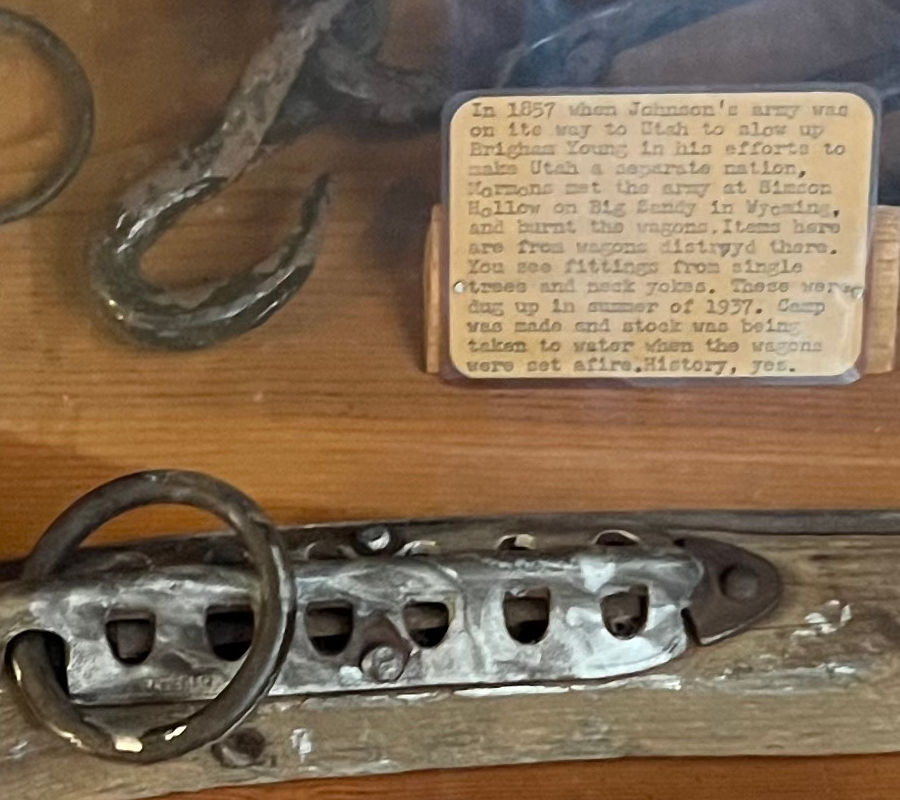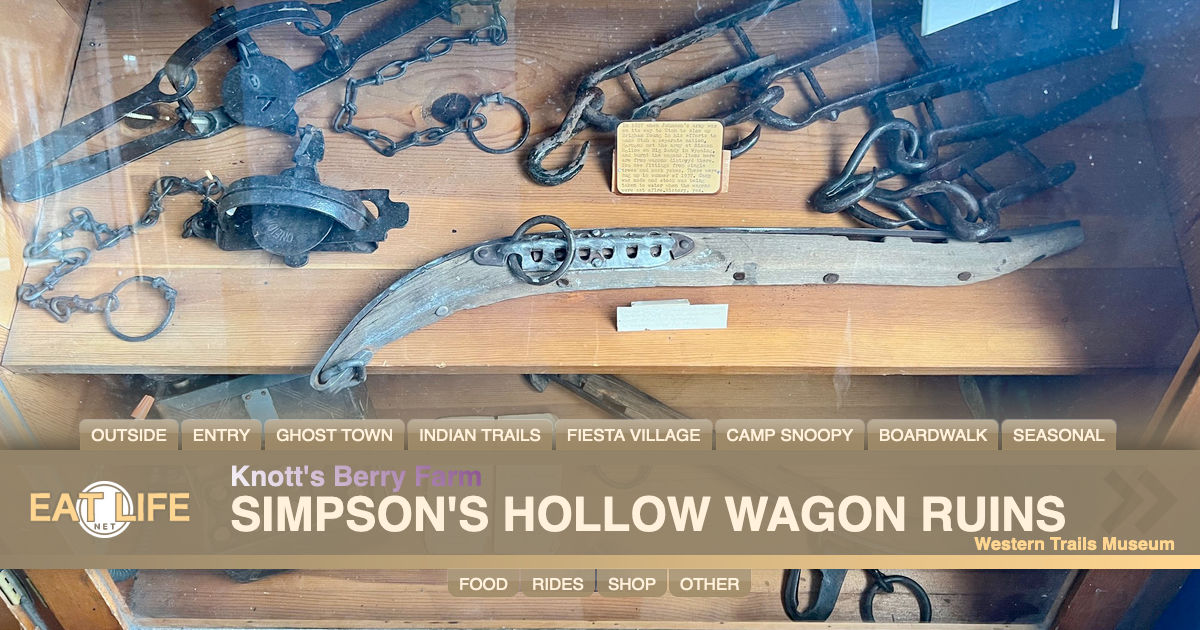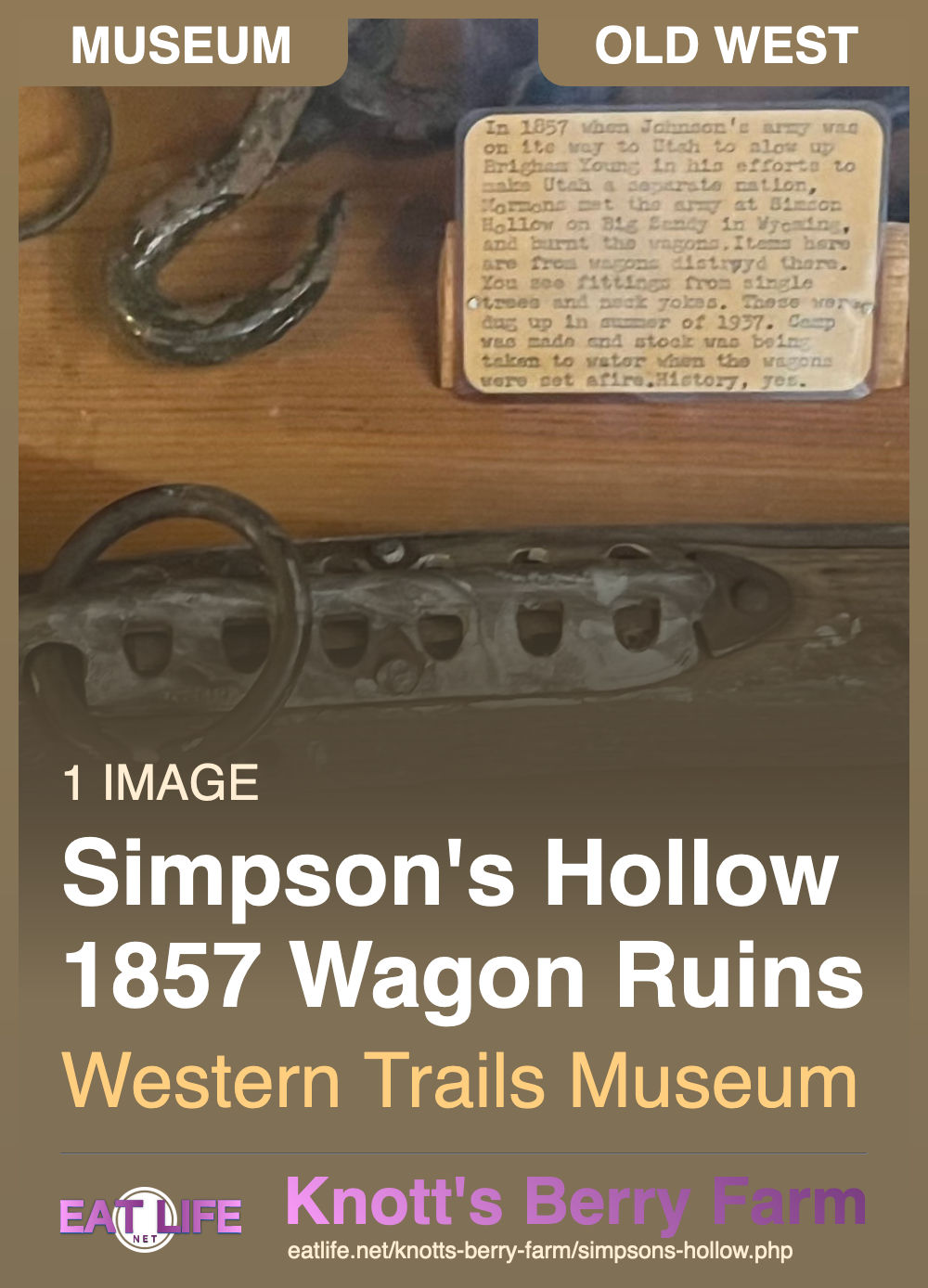Amusement Park Essentials
Snoopy T-Shirts Snoopy Stuffed Animals Knott's Raspberry Cookies
As an Amazon Associate we earn from qualifying purchases
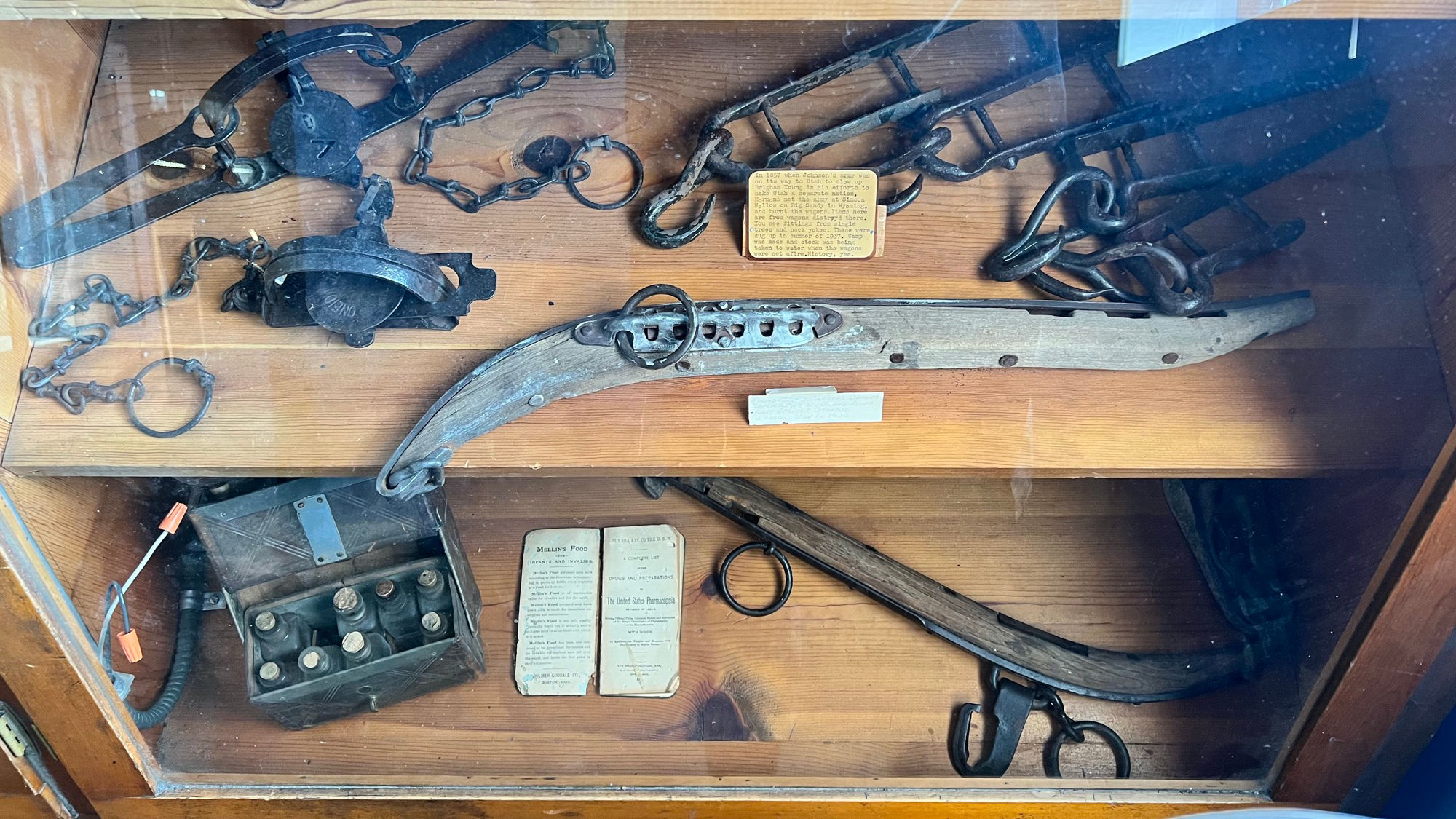
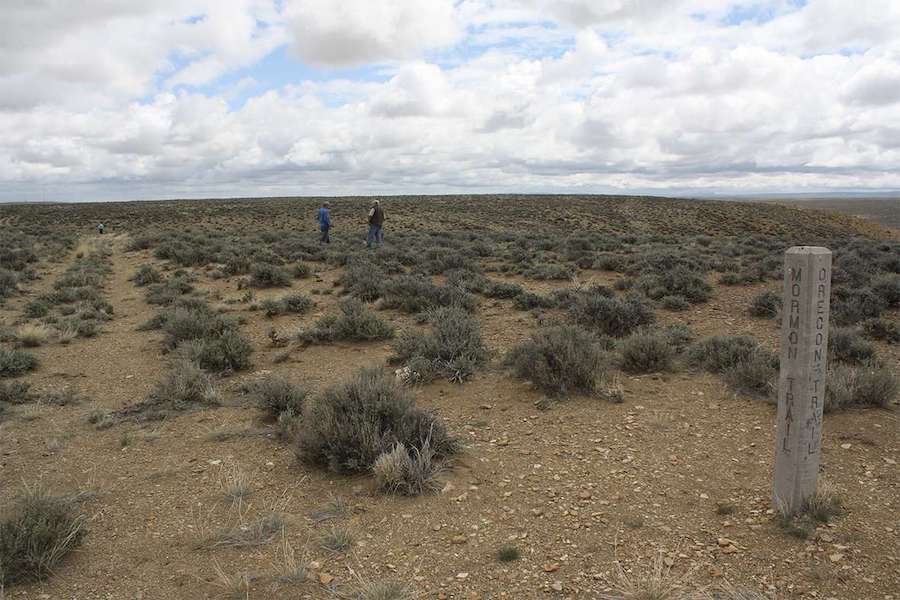
A band of Mormon militia attacked U.S. Army supply wagons in three different places in what’s now southwest Wyoming, burning 76 wagons altogether and running off a great deal of livestock. No one was killed in these skirmishes.
Best known of the attacks was at a low spot in the sagebrush along the trail later named Simpson's Hollow, about 10 miles southwest of present Farson, Wyo., on Wyoming highway 28. The place is named after Lew Simpson, the wagon master. There, the militiamen captured and burned 26 wagons, and stampeded hundreds of army mules.
The supply wagons were part of an army of U.S. troops, 2,500 strong but marching in many small groups, advancing on Utah in the summer and fall of 1857 to enforce federal law in Utah Territory. Mormons had first arrived in the Salt Lake Valley in 1847. Utah had been a territory since 1850, with Brigham Young, president of the Church of Jesus Christ of Latter-day Saints—the Mormons—serving also as territorial governor and chief federal officer of Indian affairs.
Growing friction between the Mormons and federal judges and other territorial officials through the 1850s, however, together with widespread anti-Mormon feeling in the East, led newly elected U.S. President James Buchanan to appoint Alfred Cumming as the new governor for Utah. Buchanan ordered the army, under the command of Col. Albert Sidney Johnston, to ensure that Cumming and other federal officials could take up their new offices.
Buchanan and others expected trouble in dislodging Young. Although his term had ended in 1854, he had legally kept his post because the only replacement named before Cummings had refused to serve.
The militia, under the command of Capt. Lot Smith, was under orders from church authorities to harass and resist the army, bloodlessly if possible. They burnt supply trains, stampeded stock and burned as much grass as possible, to deprive the animals of feed.
Reports of the skirmish began reaching the East the following month.
On Nov. 14, William Carter, traveling on the Oregon Trail, wrote, “We came suddenly upon the smoldering ruins of 26 wagons which were corralled on each side of the road when burned by the Mormons.”
It Became Notorious:
In 1859, travelers on the Oregon Trail could still see traces of the burned wagons, and knew of the episode, although not necessarily the precise date of its occurrence.
- On June 23, 1859, more than a year and eight months later, emigrant J. A. Wilkinson wrote, “We saw today where the Mormons had burned a government train a year ago, giving the teamsters what provisions they could pack on their backs and drove the oxen to Salt Lake.”
- “We passed more dead cattle today than any day yet, all of an ancient date however, we saw where several wagons had been destroyed by the Mormons,” John McTurk Gibson wrote on July 19, 1859.
- British travel writer and adventurer Richard Burton rode in a stagecoach along the Oregon Trail in 1860. On Aug. 21 of that year, he wrote, “We passed through a depression called Simpson’s Hollow, and somewhat celebrated in local story. Two semicircles of black still charred the ground; on a cursory view they might have been mistaken for burnt-out lignite. Here, in 1857, the Mormons fell upon a corralled train of twenty-three wagons, laden with provisions and other necessaries for Federal troops.”
Thus, Simpson's Hollow became notorious. The destruction of wagons in the vicinity, the burnt grass and evidence of other guerrilla tactics used by the Mormon church against the U.S. government marked an episode in what historians David L. Bigler and Will Bagley have called “America’s first civil war.”
On the north side of State Highway 28, there is a historical marker about Simpson's Hollow, and on the south side, Pilot Butte Interpretive Site, with more recent information.
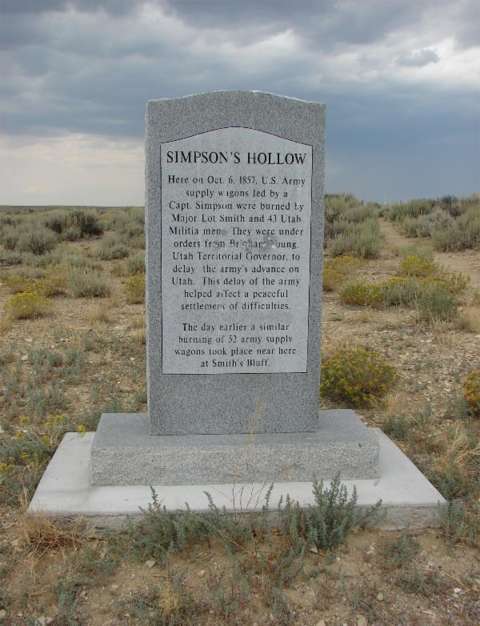
Here on Oct. 6, 1857 US Army supply wagons led by Capt. Simpson were burned by Major Lot Smith and 41 Utah Militia men. They were under orders from Brigham Young. Utah territorial Governor to delay the army's advance on Utah. This delay of the army helped affect a peaceful settlement of difficulties.
The day earlier a similar burning of 32 army supply wagons took place here at Smith's Bluff.
https://www.wyohistory.org/encyclopedia/simpsons-hollow-flash-point-utah-war
